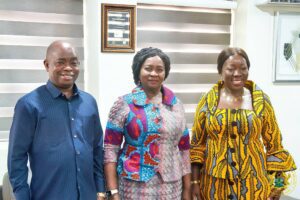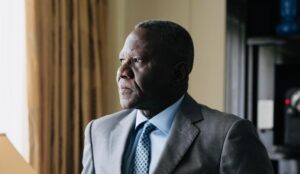
Chapter 1: The Hidden Wealth of Lagos
In the bustling metropolis of Lagos, Nigeria, the sun rose over the horizon, casting a golden hue on the city’s skyline. Among the towering buildings stood the office of the Ministry of Public Works, where Samuel Adeyemi, a seasoned government official, began his day. Samuel had worked for the ministry for over twenty years, and though he took pride in his job, he had grown increasingly disillusioned by the pervasive corruption.
One day, while reviewing a project proposal for a new highway construction, Samuel noticed irregularities in the budget. The figures were inflated, and several contractors listed had dubious credentials. Samuel decided to dig deeper, enlisting the help of his colleague, Aisha Bello, a sharp and meticulous auditor.
Aisha and Samuel worked late into the night, cross-referencing documents and tracing financial transactions. Their investigation led them to a prominent business tycoon, Mr. Okafor, who had strong political connections. Samuel and Aisha discovered that Okafor had been awarded multiple contracts worth millions of dollars, all without proper bidding processes.
Feeling the weight of their discovery, Samuel and Aisha decided to approach the anti-corruption commission with their findings. The evidence was overwhelming, and the commission launched a full-scale investigation. The media caught wind of the story, and soon, the scandal was the talk of Lagos.
Mr. Okafor was arrested, and several high-ranking officials were implicated in the corruption scheme. The case was a significant victory for the anti-corruption commission, but Samuel and Aisha knew that their battle against corruption was far from over.
Chapter 2: Shadows in Nairobi
In Nairobi, Kenya, Mary Wanjiru, a journalist for a leading newspaper, had been investigating corruption in the public health sector. Reports of misappropriated funds and poorly equipped hospitals had been circulating for years, but concrete evidence was hard to come by. Mary was determined to expose the truth.
One evening, Mary received an anonymous tip-off about a senior official in the Ministry of Health, Dr. Mwangi, who was allegedly involved in embezzling funds meant for hospital supplies. The source provided Mary with a set of confidential documents detailing the transactions.
Mary meticulously analyzed the documents, uncovering a web of deceit that stretched across several government departments. Dr. Mwangi had been diverting funds into shell companies, with the help of accomplices both inside and outside the ministry. These funds, meant for purchasing medical equipment and medicines, had instead financed luxurious lifestyles for a select few.
Armed with her findings, Mary decided to confront Dr. Mwangi. She arranged a meeting under the guise of conducting a routine interview about public health initiatives. During their conversation, Mary subtly brought up the issue of missing funds. Dr. Mwangi’s demeanor shifted, and he became defensive.
Sensing she was on the right track, Mary published a series of articles exposing the corruption. The public outcry was immediate, and pressure mounted on the government to act. Dr. Mwangi was suspended pending investigation, and a task force was set up to audit the Ministry of Health’s finances.
Mary’s courageous journalism sparked a broader conversation about accountability and transparency in Kenya’s public sector. Though she faced threats and intimidation, her resolve remained unshaken. Her work led to significant reforms, improving the allocation of resources to the country’s health sector.
Chapter 3: The Mines of Johannesburg
In Johannesburg, South Africa, Thabo Mokoena, a young lawyer, was preparing for a case that could define his career. Thabo had taken on a pro bono case representing a community affected by illegal mining activities. The community, located near an abandoned gold mine, had been suffering from environmental degradation and health problems due to the activities of illegal miners, known locally as “zama zamas.”
Thabo’s investigation revealed that the illegal mining operations were not merely the work of desperate individuals but were orchestrated by a powerful syndicate with ties to local government officials. These officials were turning a blind eye to the mining in exchange for bribes.
Determined to bring justice to the community, Thabo filed a lawsuit against the corrupt officials and the mining syndicate. The case garnered significant media attention, and Thabo became a target of intimidation. Despite the dangers, he pressed on, gathering testimonies from affected residents and former miners who were willing to speak out.
The court proceedings were intense, with powerful defense lawyers attempting to discredit Thabo’s evidence. However, Thabo’s unwavering dedication and compelling arguments swayed the judge. The court ruled in favor of the community, ordering the cessation of illegal mining activities and the prosecution of the corrupt officials involved.
The victory was a landmark moment for Thabo and the affected community. It also sent a strong message about the rule of law and the importance of holding public officials accountable. Thabo’s triumph inspired other communities to stand up against corruption and seek justice.
Chapter 4: A New Dawn in Accra
In Accra, Ghana, Nana Asamoah, a respected teacher, found himself in the midst of a scandal that rocked the education sector. Nana had dedicated his life to teaching, believing that education was the key to a better future for his students. However, he had noticed a troubling trend of exam malpractices and widespread cheating.
One day, Nana received a visit from a former student, Kwame, who confided in him about a bribery scheme involving the West African Examinations Council (WAEC). Kwame revealed that he had been approached by intermediaries who offered to sell him exam papers for a hefty fee. Shocked and disheartened, Nana decided to investigate further.
Nana enlisted the help of other concerned teachers and parents. They gathered evidence of the scheme, including recordings and transaction receipts. Their findings pointed to a network of corrupt officials within WAEC who were exploiting their positions for financial gain.
With the support of the community, Nana presented the evidence to the authorities. The investigation led to the arrest of several WAEC officials and the implementation of stricter measures to prevent exam malpractices. The scandal sparked nationwide reforms aimed at restoring integrity to the education system.
Nana’s efforts were widely lauded, and he became a symbol of integrity and dedication. His actions not only exposed corruption but also inspired a new generation of students to value honesty and hard work.
Conclusion: A Continent’s Hope
These stories from Lagos, Nairobi, Johannesburg, and Accra highlight the pervasive issue of public sector corruption in various African countries. However, they also underscore the power of ordinary individuals to challenge and overcome corruption. Samuel, Aisha, Mary, Thabo, and Nana each played a crucial role in their respective battles against corruption, demonstrating courage, resilience, and a commitment to justice.
Their efforts remind us that while corruption can undermine trust and progress, it can be fought through collective action and unwavering determination. As these case studies show, the fight against corruption is ongoing, but with heroes like these, there is hope for a brighter, more transparent future for Africa.








